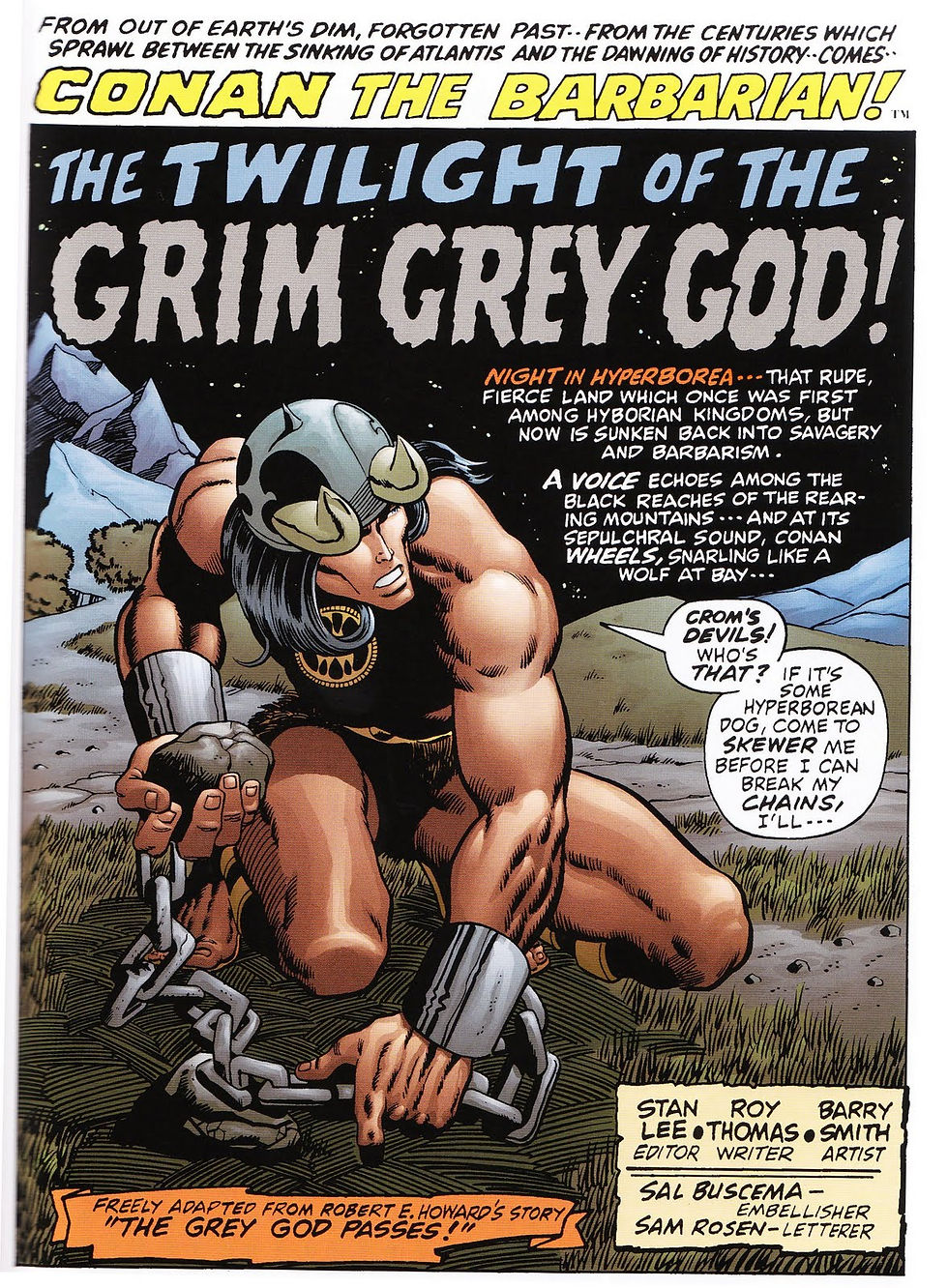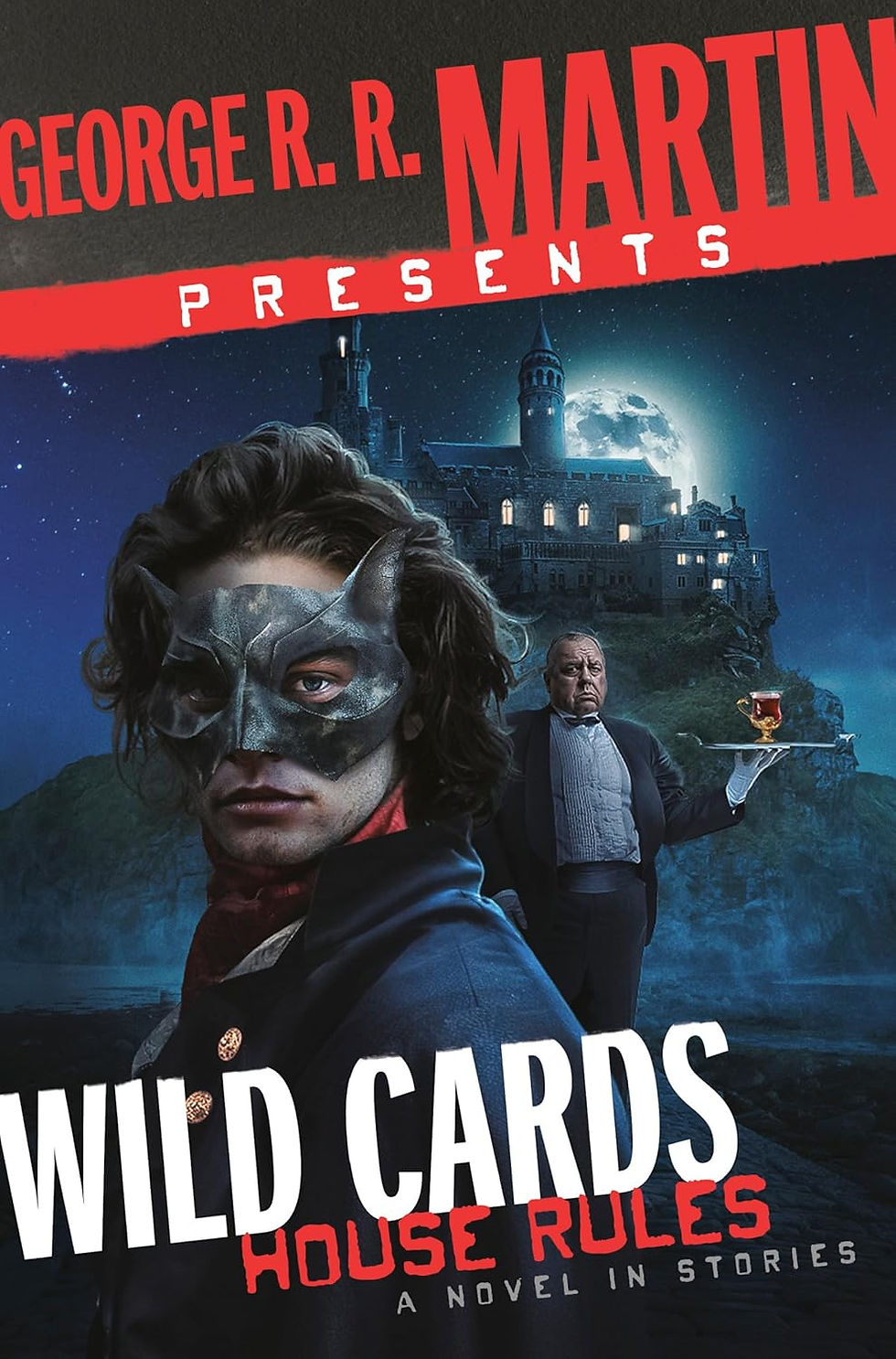Conan and the Grim Grey Easter Egg
- cyborgcaveman
- Sep 23, 2025
- 4 min read

Conan and the Grim Grey God by Sean A. Moore is the most recent Conan paperback I've reviewed and, while none of them have totally captured the potent vitality of the original stories by Robert E. Howard, each has had its strengths. Conan the Champion had fast paced action and a strong cast of characters. Conan of the Red Brotherhood had an interesting premise. Conan and the Grim Grey God has a powerful sense of itself within the larger Conan continuity.
This one is for continuity lovers
More than any other book in the Conan paperback franchise I have read so far this one uses deliberate references and callbacks to a host of original REH stories that have still yet to be equalled. There are so many I probably missed a few. The story opens in the waning days of the empire of Acheron, depicting a raid upon a temple led by Durkhan Blackblade, whom we learn is the brother of none other than the dread sorcerer Xaltotun. Both Acheron and Xaltotun featured heavily in Conan the Conqueror, also known as Hour of the Dragon, the one novella-length Conan tale Howard ever wrote.
The callbacks don't stop there. Conan's opponent in an arm wrestling match turned barroom brawl reminds him of another Kosalan he once faced, Baal Pteor from the story "Shadows in Zamboula", originally titled "Man-Eaters of Zamboula". Once Conan realizes Thoth Amon, Stygia's preeminent sorcerer, is involved in the hunt for a rare artifact, the Cimmerian briefly recounts to his companion the events of the classic short story "The God in the Bowl". Even the title of the book speaks of a deep familiarity with Howard's works. The titular Grim Grey God is a reference to Howard's non-Conan story "The Grim Grey God Passes".

Which Grim Grey what now?
In that tale, the Grim Grey God in question is Odin and his passing occurs simultaneous with the defeat of the viking horde by Irish warriors at the battle of Clontarf. In Moore's story, the reference to a grim, grey god is little more than an easter egg. It is possible the being imprisioned in the pearlescent statue everyone is after could be Odin, but that seems a stretch. It is described as a trickster, a foul lesser deity that incited a war among the more powerful gods of the Atlantean era, which necessitates a brief mention of Howard's other barbatian hero Kull. Even so, other than the specific phrase "grim, grey god", this book has even less to do with Howard's original story than Roy Thomas and Barry Windsor Smith's repurposing of it into a Conan adventure in the third issue of Marvel's original run of Conan the Barbarian.
Instead of battling the Grey God or his blood mad devotees, the heroes spend the bulk of the book on the journey to the desert where the City of Brass, and the idol containing the imprisoned god, is buried. The main players, aside from Conan who wants to temporarily trade piracy on the high seas for a bit of treasure hunting in the desert, are the necromancer Tevek Thul, the duplicitous swordswoman Kylanna (or Rubinia or Sivitri or whatever her name truly is), and a Turanian assassin called Toj. The Stygian sorcerer Thoth Amon and the wizard Caranthes make what amount to guest appearances. Thoth Amon loans his magical ring to Tevek Thul, though not without certain magical precautions to ensure its return, so the necromancer can locate the imprisoned grey god. Caranthes appears somewhat later in the book to give Conan and Kylanna a nudge in the right direction at the urging of his own deity, Ibis.
Conan vs. the Ninja!
Overall, I'm not a huge fan of the occasional attempts in both comics (I'm looking at you Kobe) and the expansion paperbacks to insert Asian style martial arts into the Conan millieu. Toj is a master of poisons, moves silent as a shadow, flings shaken (shuriken) with deadly accuracy, and can deaden an opponent's limbs with a well placed blow to the appropriate nerve cluster. Toj is a ninja in all but name. To top it all off he's also been equipped with the deadly Red Asp, a sorcerous dagger that kills with a scratch and leaves its victims unnaturally cold and stiff.
The Red Asp is provided to Toj by Jade, mysterious mistress of a network of thieves, spies, and assassins that stretches across the Hyborian continent. Jade's true identity is not half so mysterious as the author might wish. I'm sure you can guess it for yourself. I did. Setting that aside, at the time of bestowing the Red Asp upon Toj, Jade also infects him with a deadly kalb beetle to ensure his obedience just as Thulsa Doom bound Tevek Thul with the Wick of Death. In fact, considering there are two for one in this novel and the compulsion laid upon Conan in Conan and the Emerald Lotus, magically enforced obedience seems to be something of a theme in the larger world of the non-Howard Conans. An uncharitable part of me says such devices speak to authors unable to provide any better motivations for their characters.
The Grim Grey Book Passes
The action of the story is largely straightforward and competently written, but it never really got my blood pumping. For me, the most entertaining thing about this one was all of those little nods to continuity scattered throughout the pages, but because it is securely set into a specific niche in Conan's continuity there is no sense of peril, not just for Conan but for any of the characters with a pedigree. Conan isn't going to die, that's a given. Thoth Amon was never going to permanently lose his ring to Tevek Thul. Caranthes could have possibly died in his duel with his arch enemy Thoth Amon, but one imagines the editors in charge of the line of Conan paperbacks didn't just allow legacy characters created by Howard, even vaguely defined ones like Caranthes, to be killed on a whim.
Final judgement: Conan and the Grim Grey God is a brisk, entertaining read without a lot in the way of actual thrills and surprises. That early image of Tevek Thul's carriage pulled along by skeletal horses and guarded by undead warriors was a good one and, other than the total destruction and desecration he visits upon a shrine to Ibis, Thul never really rises any higher than that. Good enough to occupy a few lazy afternoons.



Comments